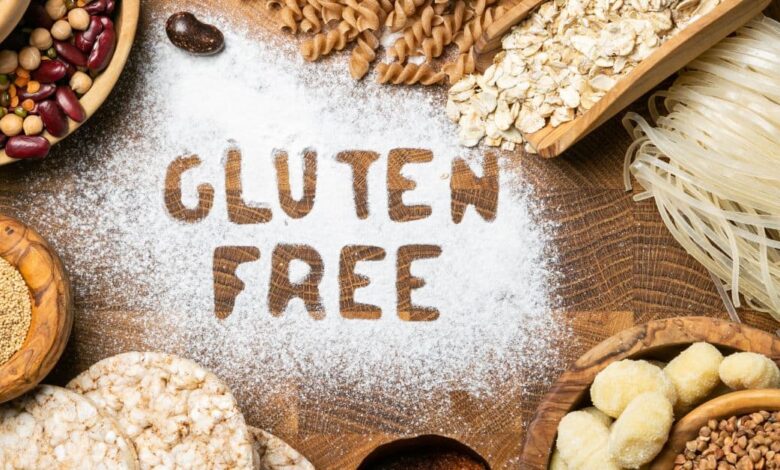Going Gluten-Free: A Complete Guide with Smart Tips and Fast Food Options

In recent years, gluten-free diets have soared in popularity—not just among individuals with celiac disease or gluten sensitivity, but also among those looking to improve digestion, reduce inflammation, and support overall health. But going gluten-free isn’t always as simple as just cutting out bread or pasta. It requires a keen eye for hidden sources of gluten and a strategic approach to nutrition. Whether you’re newly diagnosed or just curious about living gluten-free, this guide offers valuable insights, practical tips, and even fast-food options like Subway gluten free for when you’re on the go.
What is Gluten, and Why Go Gluten-Free?
Gluten is a protein found in wheat, barley, and rye. It gives dough its elasticity and baked goods their chewy texture. While gluten is harmless for most people, it can trigger serious health issues in others. Celiac disease is an autoimmune disorder where ingesting gluten damages the small intestine. Non-celiac gluten sensitivity and wheat allergy are other conditions that also require strict gluten avoidance.
Beyond medical necessity, some individuals adopt a gluten-free lifestyle to reduce bloating, boost energy, or explore anti-inflammatory diets. However, it’s important to note that a gluten-free label doesn’t always mean healthier—it depends on your overall food choices.
Common Pitfalls of a Gluten-Free Diet
Switching to a gluten-free diet can be overwhelming at first. Many processed foods contain hidden gluten, from sauces and seasonings to soups and even certain medications. Reading labels is essential. Look for “certified gluten-free” products and familiarize yourself with gluten’s many aliases like malt flavoring, brewer’s yeast, and hydrolyzed wheat protein.
Another common issue is nutrient deficiency. Whole wheat products are rich in fiber, iron, and B vitamins—nutrients that are often lacking in gluten-free alternatives. To stay balanced, incorporate naturally gluten-free whole foods such as brown rice, quinoa, lentils, fruits, and vegetables.
Eating Gluten-Free on the Go: Subway Gluten Free and Other Options
Dining out can be tricky when you’re avoiding gluten, especially when it comes to fast food. But today, more restaurants are offering gluten-free alternatives to cater to their growing customer base. A standout in the fast-food industry is Subway, which has introduced Subway gluten free bread at select locations across the United States and other countries.
Subway’s gluten-free bread is made and packaged in a gluten-free facility and is individually wrapped to avoid cross-contamination. It’s a welcome option for those seeking convenience without compromising dietary restrictions. While the availability may vary by location, Subway’s initiative shows that even mainstream chains are taking gluten-free needs seriously. Just be sure to communicate clearly with staff and request careful preparation to reduce the risk of cross-contact with gluten-containing ingredients.
Smart Tips for Thriving on a Gluten-Free Diet
1. Plan Ahead: Whether you’re cooking at home or eating out, planning your meals in advance reduces the chance of accidental gluten exposure. Keep gluten-free snacks like nuts, granola bars, or rice cakes handy when you’re on the move.
2. Cook More Often: Preparing meals at home allows you to control ingredients and avoid cross-contamination. Plus, it’s a great way to discover delicious gluten-free recipes using fresh, whole ingredients.
3. Watch Out for Sauces and Condiments: Soy sauce, salad dressings, and marinades often contain gluten. Opt for certified gluten-free versions or make your own using safe ingredients.
4. Join a Community: Support groups, both online and offline, can provide encouragement, recipe ideas, and local tips on gluten-free-friendly restaurants or products.
5. Keep a Food Diary: If you’re still experiencing symptoms even after going gluten-free, a food diary can help identify hidden triggers or accidental gluten intake.
Nutrient Boosters for a Gluten-Free Life
A successful gluten-free diet isn’t just about avoiding gluten—it’s also about nourishing your body. Focus on these key nutrient-dense foods:
- Quinoa and Buckwheat: These gluten-free grains are rich in protein and fiber.
- Leafy Greens: Excellent sources of folate, iron, and calcium.
- Legumes: Beans and lentils offer plant-based protein and complex carbs.
- Fatty Fish: Salmon and sardines are loaded with omega-3 fatty acids.
- Fruits and Veggies: Always naturally gluten-free and essential for vitamins and antioxidants.
If you’re concerned about nutrient gaps, talk to your healthcare provider about supplements for iron, B12, or folic acid, especially if you’ve recently transitioned from a gluten-containing diet.
Final Thoughts
Going gluten-free can be a transformative lifestyle choice, especially for those with gluten intolerance or celiac disease. With increased awareness, better food labeling, and accommodating restaurants like Subway gluten free, living gluten-free is more accessible than ever. However, staying informed, planning meals, and focusing on whole, nutrient-rich foods are key to long-term success.
Remember: gluten-free doesn’t have to mean flavor-free or joyless. With a little creativity and mindfulness, your diet can be both delicious and health-boosting.
